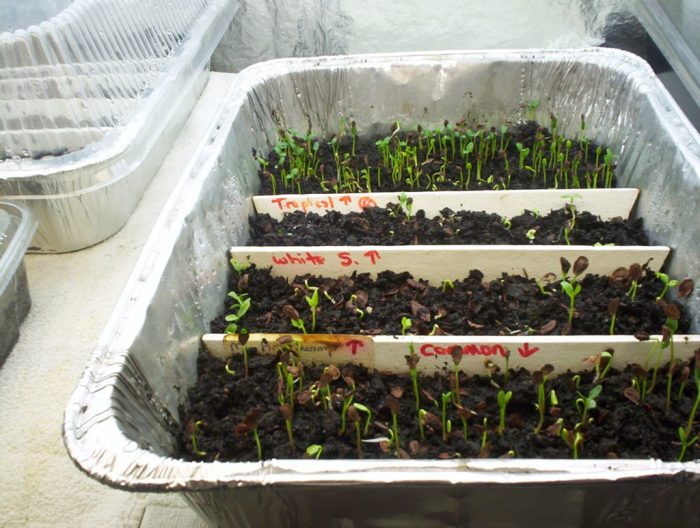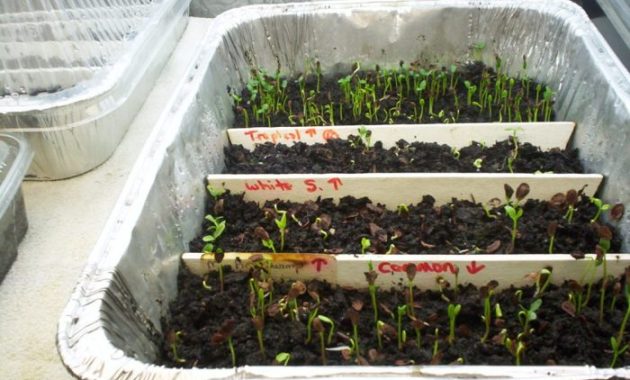Post-Planting Care

How do you plant milkweed seeds – Ah, the post-planting phase! Think of it as the milkweed’s awkward teenage years – a bit unpredictable, requiring careful nurturing, and occasionally prone to dramatic outbursts (like a sudden aphid infestation). But with a little TLC, you’ll soon have a thriving patch of these butterfly-magnet marvels.
Consistent watering is paramount, especially during dry spells. Imagine your milkweed seedlings as tiny, thirsty adventurers traversing the Sahara Desert – they need regular hydration to survive and thrive. Overwatering, however, can lead to root rot, so strike a balance. Aim for consistently moist, but not soggy, soil. Think of it as Goldilocks and the Three Bears, but with soil moisture instead of porridge.
Watering Milkweed Seedlings
The frequency of watering will depend on your climate and soil type. Sandy soil dries out much faster than clay soil, requiring more frequent watering. Check the soil moisture regularly by sticking your finger about an inch into the soil. If it feels dry, it’s time to water. Deep, infrequent watering is better than shallow, frequent watering, encouraging deeper root growth.
So, you wanna plant milkweed seeds, eh? It’s not rocket science, but planting those tiny things is trickier than it looks! Need a bigger challenge? Check out how to plant a tree in texas – that’s a whole different ballgame, especially with the Texas heat! Anyway, back to milkweed: make sure the soil’s moist, give ’em some sun, and pray to the plant gods, you know, for good measure.
Fertilizing Milkweed Seedlings
Milkweed seedlings generally don’t require heavy fertilization. In fact, too much fertilizer can be detrimental, leading to lush foliage at the expense of flower production (and remember, the flowers are what attract the butterflies!). If your soil is particularly poor, a light application of a balanced, slow-release fertilizer can be beneficial. But remember, less is more. A tiny pinch is often enough.
Over-fertilizing is like giving a teenager unlimited access to candy – initially fun, but ultimately disastrous.
Pests and Diseases Affecting Milkweed Seedlings
Alas, even the hardiest of milkweed seedlings are susceptible to pests and diseases. Aphids are a common culprit, sucking the life out of tender leaves. Other potential enemies include spider mites and milkweed beetles. Preventative measures include maintaining good air circulation (avoid overcrowding!), and regularly inspecting your seedlings for signs of infestation. A strong spray of water can often dislodge aphids, while insecticidal soap can be used as a last resort.
For diseases, ensuring good drainage and avoiding overhead watering can help prevent fungal issues.
Protecting Milkweed Seedlings from Harsh Weather
Milkweed seedlings are surprisingly resilient, but they’re not invincible. Frost can be particularly damaging, potentially killing young plants. If frost is predicted, consider covering your seedlings with a frost cloth or relocating them to a sheltered area. Extreme heat can also stress seedlings, leading to wilting and reduced growth. Providing some shade during the hottest parts of the day can help mitigate this.
Think of it as providing them with a fashionable sunhat on a scorching summer day.
Thinning Milkweed Seedlings
Overcrowding is a common problem, leading to competition for resources and weaker plants. Once seedlings have a few true leaves, thin them out to give each plant enough space to grow. The ideal spacing will vary depending on the milkweed species, but generally, aim for at least 6-12 inches between plants. It might seem cruel to remove some seedlings, but it’s a necessary evil to ensure the survival and healthy growth of the remaining plants.
Think of it as a survival-of-the-fittest competition, but with a much happier ending.
Choosing the Right Milkweed Variety

Selecting the perfect milkweed for your garden might seem like a walk in the park, but trust us, it’s more of a botanical adventure! Choosing the right variety ensures a thriving plant, happy butterflies, and a flourishing ecosystem. Ignoring this crucial step could lead to a wilting disappointment – a sad sight indeed for both you and the monarch butterflies you’re hoping to attract.
The world of milkweed is surprisingly diverse, with a vast array of species boasting unique characteristics. Understanding these differences is key to successful milkweed cultivation and maximizing its impact on your local butterfly population. Failing to choose a suitable variety can result in a plant that struggles to thrive, ultimately hindering your efforts to support these vital pollinators.
Milkweed Species for Various Climates and Regions
The ideal milkweed species varies dramatically depending on your location. Choosing a native milkweed is crucial, as non-native varieties can sometimes introduce unwanted pests or diseases and may not provide the same nutritional benefits to butterflies. Below is a small selection of the many milkweed species that thrive in different parts of North America. Remember to consult local resources for a comprehensive list specific to your region.
| Milkweed Species | Region | Growth Habit | Flower Color |
|---|---|---|---|
| Asclepias tuberosa (Butterfly Weed) | Eastern and Central North America | Low-growing, clump-forming | Orange |
| Asclepias syriaca (Common Milkweed) | Eastern North America | Tall, spreading | Pinkish-purple |
| Asclepias incarnata (Swamp Milkweed) | Eastern and Central North America | Tall, upright | Pink to rose-purple |
| Asclepias speciosa (Showy Milkweed) | Western North America | Tall, spreading | Pinkish-purple to lavender |
Comparing Milkweed Characteristics, How do you plant milkweed seeds
Milkweed varieties exhibit a fascinating range of characteristics, influencing their suitability for different gardens and butterfly species. These variations extend beyond just flower color, encompassing growth habit, plant size, and even the toxicity of the plant itself (which can impact the butterflies’ vulnerability to predators).
| Characteristic | Asclepias tuberosa | Asclepias syriaca | Asclepias incarnata |
|---|---|---|---|
| Height | 1-2 feet | 3-5 feet | 3-5 feet |
| Spread | 1-2 feet | 2-3 feet | 1-2 feet |
| Flower Color | Orange | Pinkish-purple | Pink to rose-purple |
| Moisture Preference | Dry to medium | Moist | Moist to wet |
The Importance of Native Milkweed Species
Selecting native milkweed is paramount for supporting local butterfly populations. Native milkweeds have co-evolved with local insects and provide the ideal habitat and nutrition for monarch butterflies and other pollinators. Non-native species may not provide the same nutritional value, or worse, could introduce diseases to the local ecosystem. Think of it as choosing locally sourced produce for your garden; it’s better for the environment and the butterflies.
Choosing Milkweed for Specific Butterfly Species
Different milkweed species attract different butterfly species. While monarchs utilize a wide range of milkweeds, other species have more specific preferences. Researching the butterfly species present in your region and their preferred milkweed hosts is essential for maximizing your garden’s appeal. For example, Queen butterflies prefer Asclepias incarnata, while Monarchs are more versatile.
Milkweed Variety Selection Factors and Butterfly Attraction
The final decision on which milkweed to plant should consider a range of factors, including your climate, soil type, available space, and desired aesthetic appeal. However, the primary focus should always be on supporting the local butterfly population. A carefully chosen milkweed variety can transform your garden into a vibrant haven for these essential pollinators.
Frequently Asked Questions: How Do You Plant Milkweed Seeds
What is the best time to harvest milkweed seeds?
The optimal time to harvest milkweed seeds is after the seed pods have turned brown and dried, typically in late autumn.
Can I use store-bought potting mix for milkweed seeds?
While you can, a well-draining seed-starting mix is ideal. Store-bought mixes often retain too much moisture, which can lead to seed rot.
How long does it take for milkweed seeds to germinate?
Germination time varies depending on the species and conditions, but it can range from a few weeks to several months.
What should I do if my milkweed seedlings are leggy?
Leggy seedlings indicate insufficient light. Move them closer to a light source or supplement with grow lights.

